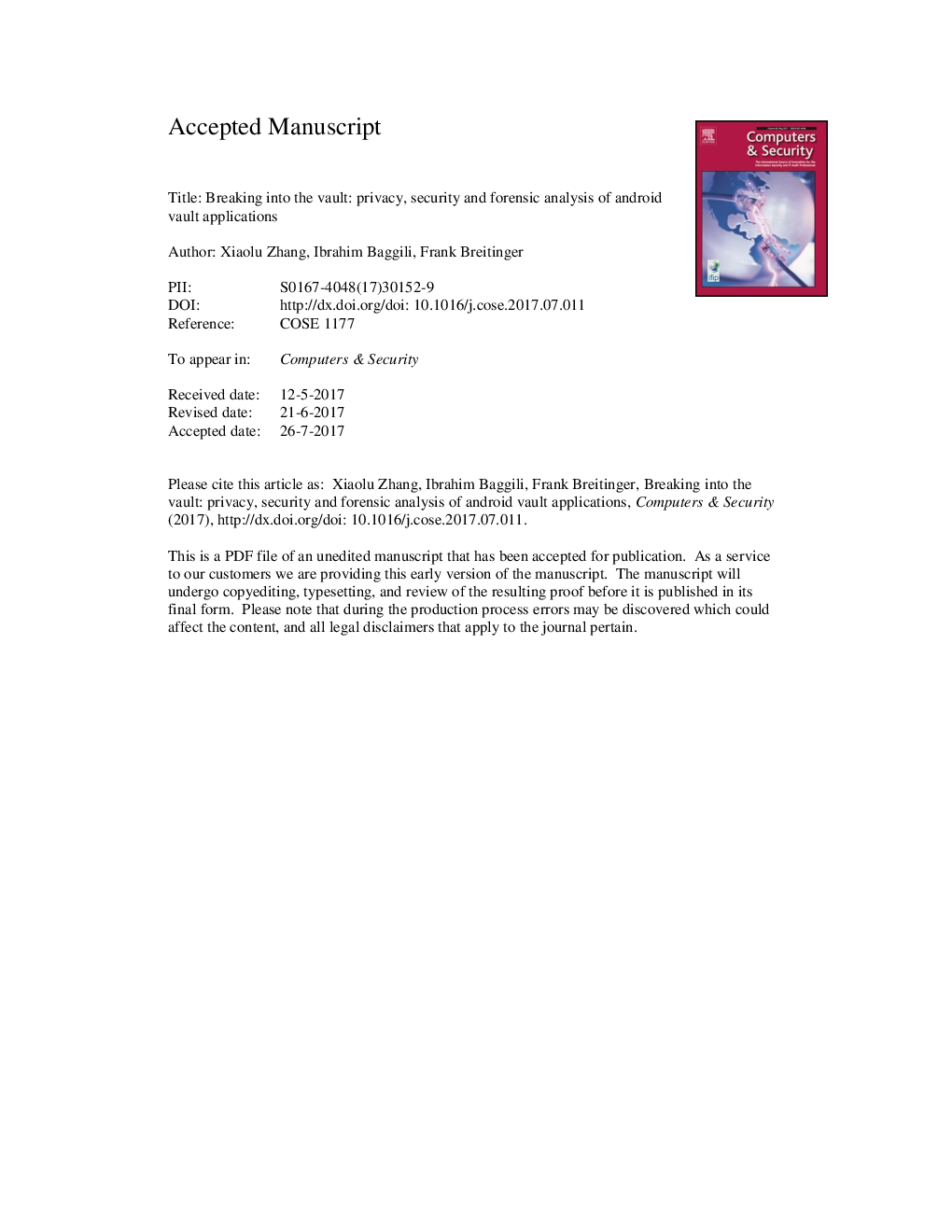| Article ID | Journal | Published Year | Pages | File Type |
|---|---|---|---|---|
| 4955434 | Computers & Security | 2017 | 41 Pages |
Abstract
In this work we share the first account for the forensic analysis, security and privacy of Android vault applications. Vaults are designed to be privacy enhancing as they allow users to hide personal data but may also be misused to hide incriminating files. Our work has already helped law enforcement in the state of Connecticut to reconstruct 66 incriminating images and 18 videos in a single criminal case. We present case studies and results from analyzing 18 Android vault applications (accounting for nearly 220 million downloads from the Google Play store) by reverse engineering them and examining the forensic artifacts they produce. Our results showed that 1218 obfuscated their code and 518 applications used native libraries hindering the reverse engineering process of these applications. However, we still recovered data from the applications without root access to the Android device as we were able to ascertain hidden data on the device without rooting for 1018 of the applications. 618 of the vault applications were found to not encrypt photos they stored, and 818 were found to not encrypt videos. 718 of the applications were found to store passwords in cleartext. We were able to also implement a swap attack on 518 applications where we achieved unauthorized access to the data by swapping the files that contained the password with a self-created one. In some cases, our findings illustrate unfavorable security implementations of privacy enhancing applications, but also showcase practical mechanisms for investigators to gain access to data of evidentiary value. In essence, we broke into the vaults.
Related Topics
Physical Sciences and Engineering
Computer Science
Computer Networks and Communications
Authors
Xiaolu Zhang, Ibrahim Baggili, Frank Breitinger,
